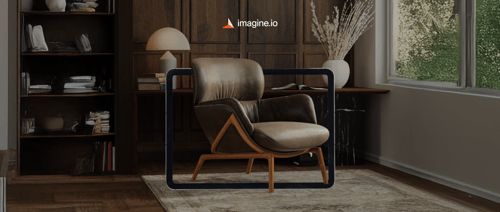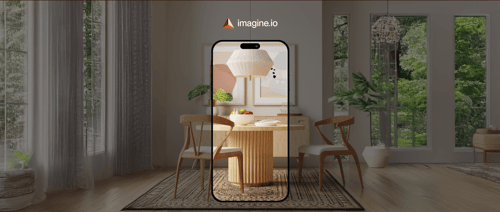YouTube emerges as the leading platform for demonstrating configurable product options. Businesses leverage video content to showcase customization features, driving engagement and sales.
Quick Listen:
Picture this: a shopper, overwhelmed by endless choices in color, fabric, and design, finally clicks "buy" after watching a video that brings their dream couch to life. In today's eCommerce boom, platforms like YouTube are revolutionizing how brands demystify customizable products, turning confusion into confidence. As explored in the insightful piece YouTube: The New Frontier for Explaining Configurable Product Options, this visual medium isn't just entertaining it's a powerful tool for enhancing consumer understanding and driving sales in industries from furniture to fashion.
The Rise of Video in Product Customization
Video content has surged in popularity, becoming the preferred way for consumers to grasp intricate details about products. YouTube, with its vast audience, stands out as a prime venue for brands to illustrate configurable options dynamically. The video tutorial creation software market, which stood at roughly USD 0.47 billion in 2024, is poised to expand to USD 1.76 billion by 2033, advancing at a robust compound annual growth rate of 17.4% between 2025 and 2033. This growth underscores the demand for sophisticated tools that blend screen recordings with voiceovers, enabling precise demonstrations of multifaceted procedures. These platforms also feature integrated editing capabilities, allowing creators to refine content with subtitles and notes for clearer comprehension. As a result, brands harness these adaptable systems to craft compelling guides that foster effective information sharing and cultivate engaging settings for viewers.
This expansion isn't accidental. Shoppers increasingly seek immersive experiences that go beyond text or photos. They want to witness how a product's features adapt in real scenarios, like adjusting a laptop's specs or mixing sofa modules. YouTube's format supports this by hosting videos that not only inform but also entertain, building trust and encouraging purchases.
From Static to Dynamic: The Visualization Revolution
Traditional product displays flat images and descriptions often fall short in conveying the full potential of customizable items. Brands now pivot to 3D visualizations and AI-driven content, creating videos that let viewers explore every facet interactively. Tools from imagine.io exemplify this shift, offering 3D product visualization that transforms static listings into lively demonstrations, making it easier for consumers to picture personalized outcomes.
Integrating AR and VR
Augmented and virtual reality elevate this further. Brands embed AR in YouTube videos, allowing viewers to overlay custom furniture in their own spaces via mobile devices. VR takes it a step deeper, immersing users in virtual showrooms where they tweak options in a simulated environment. These technologies reduce hesitation, as customers gain a tangible sense of fit and style before committing.
Such innovations cut down on returns by aligning expectations with reality. For instance, a video might show a user rotating a 3D model of a configurable chair, changing fabrics and angles on the fly. This interactivity not only captivates but also educates, positioning YouTube as an indispensable channel for modern eCommerce.
Real-World Wins: Customization in Action
Brands across sectors leverage YouTube to spotlight configurable features, yielding impressive results. In furniture, companies like Joybird showcase custom pieces through videos that detail material choices and assembly, helping customers visualize home integrations.
Furniture Brands Leading the Way
Burrow, known for modular sofas, uses YouTube to demonstrate how sections snap together in various layouts. Viewers see real-time adjustments for color and configuration, easing decision-making. Similarly, Room & Board offers guides on styling customizable tables, blending aesthetics with functionality to inspire purchases.
Consumer Electronics Innovations
In electronics, Apple highlights Mac customization on YouTube, walking through processor upgrades and storage options with animated breakdowns. Samsung follows suit, showcasing Galaxy phone tweaks like camera enhancements. These tutorials clarify technical specs, turning complex choices into straightforward selections.
Fashion and Apparel Personalization
Fashion giants like Nike employ YouTube for "Nike By You" videos, where creators design sneakers step-by-step, selecting hues and patterns. Chanel, meanwhile, demonstrates handbag customizations, emphasizing luxury materials. Such content not only displays options but also tells stories, connecting emotionally with audiences.
These examples illustrate how targeted videos boost engagement, with brands reporting higher conversion rates as viewers feel empowered to tailor products confidently.
The Challenges: Standing Out in a Crowded Space
While opportunities abound, hurdles persist. Producing top-tier 3D content demands technical prowess, which smaller brands may lack, leading to subpar videos that fail to impress.
Technical and Resource Barriers
High-quality production requires investment in software and skills. Without them, videos might appear amateurish, deterring viewers. Oversaturation compounds this; YouTube brims with demos, so brands must innovate to capture attention amid the deluge.
Preserving Brand Voice
Consistency is key. In a rapid-content world, maintaining a distinct voice ensures videos resonate authentically. Missteps here can dilute messaging, confusing audiences about the brand's identity.
Navigating these requires strategic planning, from partnering with experts to focusing on unique angles that differentiate content.
Opportunities: Engagement, Efficiency, and Impact
Despite obstacles, the payoffs are substantial. Interactive videos heighten involvement, fostering loyalty and sales in customization-heavy fields.
Boosting Conversion and Satisfaction
Detailed demos minimize doubt, slashing returns and elevating satisfaction. Brands see engagement spikes, with viewers lingering longer and converting more readily.
Leveraging AI for Cost Savings
AI tools, fueling the market's 17.4% growth, streamline creation, enabling quick updates without hefty costs. This agility keeps content current, enhancing relevance and efficiency.
Overall, these strategies yield measurable business gains, from revenue boosts to stronger customer ties.
A Memorable The Future of Configurable Products
YouTube has emerged as a pivotal arena for elucidating configurable products, merging video's allure with advanced 3D and AI from platforms like imagine.io. As the video tutorial software sector swells from USD 0.47 billion to 1.76 billion by 2033, its role will intensify. Forward-looking, AI, AR, and VR promise even more seamless experiences, where consumers co-create intuitively.
Brands should dive in: adopt superior visualization, prioritize education via video, and craft narratives that captivate. In personalization's era, YouTube isn't merely a platform it's the gateway to deeper consumer bonds and eCommerce evolution.
Frequently Asked Questions
How does YouTube help customers understand configurable product options better than traditional methods?
YouTube transforms static product displays into dynamic, interactive experiences that allow customers to see how customizable features work in real-time. Unlike flat images and text descriptions, video content enables brands to demonstrate 3D visualizations, AR overlays, and step-by-step customization processes. This visual approach helps customers visualize personalized outcomes and reduces purchase hesitation by providing a tangible sense of how products will fit their specific needs.
What industries are successfully using YouTube videos to showcase customizable products?
Furniture brands like Burrow and Joybird lead the way by demonstrating modular configurations and material choices through YouTube videos. Consumer electronics companies such as Apple and Samsung use the platform to explain technical customizations like processor upgrades and camera enhancements. Fashion brands including Nike ("Nike By You") and Chanel showcase personalization options for sneakers and handbags, creating emotional connections while displaying available customization features.
What are the main challenges brands face when creating YouTube content for configurable products?
The primary challenges include high production costs and technical expertise required for quality 3D content creation, which can be particularly difficult for smaller brands with limited resources. Content oversaturation on YouTube makes it challenging to stand out among numerous product demonstrations. Additionally, maintaining consistent brand voice while rapidly producing content is crucial, as missteps can dilute messaging and confuse audiences about the brand's identity.
Disclaimer: The above helpful resources content contains personal opinions and experiences. The information provided is for general knowledge and does not constitute professional advice.
You may also be interested in: imagine.io | Award Winning 3D + AI Product Visualization
Struggling with expensive, outdated product visuals that slow down your creative process and stunt eCommerce growth? imagine.io's AI-powered platform empowers furniture, home décor, and textile brands to effortlessly produce striking 3D images, immersive videos, AR experiences, and interactive configurators. Cut production costs up to 70%, boost conversions 5X, speed up prototyping, and supercharge your online sales. Ready to elevate your product visuals and captivate customers? Book a demo with imagine.io today!
Powered by flareAI.co




.png?width=500&name=How%20to%20Add%20a%203D%20Product%20Configurator%20to%20Your%20WordPress%20Website%20(Complete%20B2B%20Guide).png)
















%20(1).png?width=500&name=Why%20Exploded%20Mattress%20Views%20Matter%20(And%20How%20to%20Generate%20Them)%20(1).png)
.png?width=500&name=Best%20Shopify%20Product%20Configurator_%20How%20to%20Choose%20the%20Right%20One%20(2).png)
.png?width=500&name=Why%20Exploded%20Mattress%20Views%20Matter%20(And%20How%20to%20Generate%20Them).png)



.png?width=500&name=Best%20Shopify%20Product%20Configurator_%20How%20to%20Choose%20the%20Right%20One%20(1).png)







.png?width=500&name=How%203D%20Rendering%20Can%20Make%20or%20Break%20Your%20Industrial%20Design%20Pitch%20(1).png)








%20with%20Digital%20Twins%20and%203D%20Visualization.png?width=500&name=Optimizing%20Your%20Digital%20Asset%20Management%20(DAM)%20with%20Digital%20Twins%20and%203D%20Visualization.png)




.png?width=500&name=Styling%20Home%20Decor%20for%202025_%20From%20Global%20Influences%20to%20Playful%20Personalization%20(1).png)
